Types of 3D Printing Materials and How They Form Backbone of Additive Manufacturing
From low-cost plastic filament to engineering-grade titanium powder, the range of available 3D printing materials is wider than ever. Here we look at the key material categories.
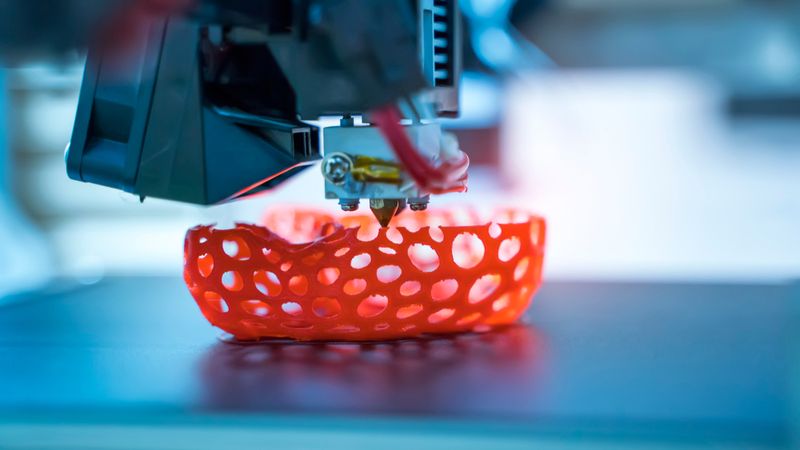
Thermoplastic filament is just one type of 3D printing material
From steel to sand, 3D printing materials determine the function, quality, and printability of a final part. Unsurprisingly, the landscape of 3D printing materials has undergone an evolution over the last 40 years, moving on from basic plastics to an extensive array of polymers, metals, ceramics, and composites.
This evolution has made an impact on industries ranging from aerospace and automotive to healthcare and consumer goods, enabling the creation of complex, customized, and high-performance parts that were once impossible to manufacture. Understanding the properties and capabilities of these diverse materials is important for engineers and designers to harness the full potential of additive manufacturing, whether they are beginner users of desktop printers or industrial users of production-level powder bed fusion systems.
As 3D printing continues to push the boundaries of what's possible, the choice of 3D printing materials becomes increasingly important. This article goes over the basics of four key material categories, also looking at some industry-specific materials and new developments.
Thermoplastic Polymers
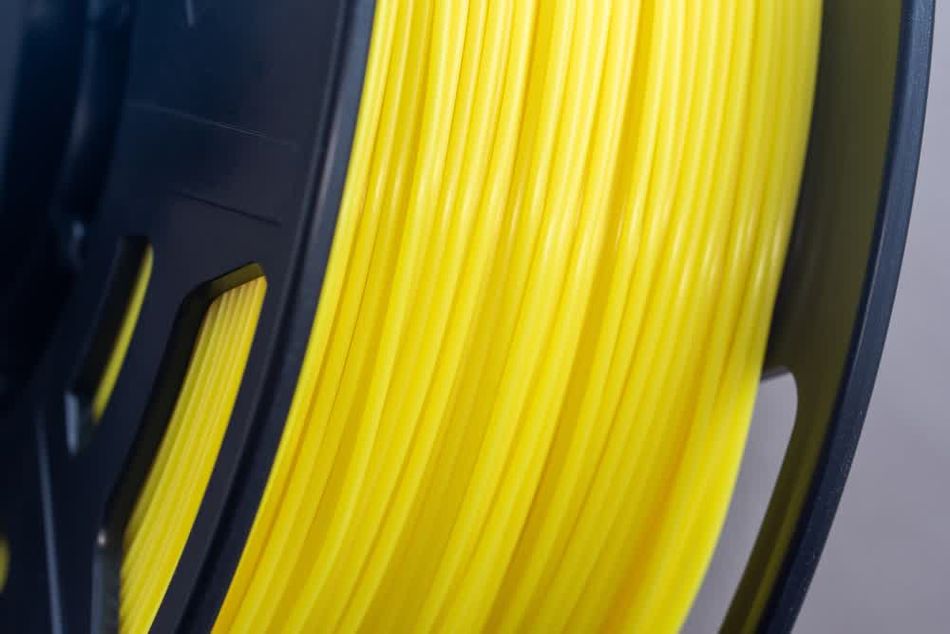
Thermoplastic polymers form the backbone of the fused filament fabrication (FFF) or Fused Deposition Modeling (FDM) 3D printing materials landscape, offering a wide range of properties and applications. These versatile plastics have become the go-to choice for many 3D printing projects due to their ease of use, cost-effectiveness, and diverse characteristics. Thermoplastics are also used in selective laser sintering (SLS), a powder bed process for plastic parts.[1]
Polymer | Strength | Heat Resistance | Flexibility | Typical Uses |
PLA | Moderate | Low | Low | Prototypes, decorative items, low-stress parts |
ABS | High | High | Moderate | Functional prototypes, automotive parts, consumer goods |
PETG | High | Moderate | High | Food containers, medical devices, transparent parts |
Nylon | Very High | High | High | Gears, bearings, functional parts, high-strength components |
TPU | Moderate | Low | Very High | Flexible joints, phone cases, wearable items, seals |
PC (Polycarbonate) | Very High | Very High | Moderate | Electrical components, enclosures, high-temperature applications |
HIPS | Moderate | Moderate | Low | Support structures, functional parts, low-stress applications |
PVA | Low | Low | Low | Water-soluble support material |
ASA | High | Very High | Moderate | Outdoor applications, automotive parts, UV-resistant parts |
PP (Polypropylene) | High | Moderate | Very High | Living hinges, chemical-resistant containers, medical devices |
PEEK | Very High | Extremely High | Moderate | Aerospace components, medical implants, high-stress parts |
ULTEM (PEI) | Very High | Extremely High | Low | Aerospace, automotive, electrical insulators, high-performance parts |
Polylactic Acid (PLA) is one of the most popular thermoplastic 3D printing filaments. Derived from renewable resources such as corn starch, PLA offers good printability, low warping, and a good aesthetic finish. It's biodegradable and emits a sweet odor during printing, making it ideal for prototyping, decorative items, and simple applications.
Acrylonitrile Butadiene Styrene (ABS) is known for its durability and heat resistance. This petroleum-based plastic is favored in automotive and consumer goods industries. ABS parts can withstand higher temperatures and mechanical stress compared to PLA, making it suitable for functional prototypes and end-use parts.
Polyethylene Terephthalate Glycol (PETG), the third most common material for FDM printers, combines the ease of use of PLA with the durability of ABS. It offers excellent layer adhesion, chemical resistance, and flexibility. PETG is often used in food-safe applications, medical devices, and transparent parts due to its clarity and strength.
Recommended reading: What is PLA Filament? Composition, Advantages, Applications
High-Performance Polymers
The field of 3D printing polymers is rapidly evolving, with new high-performance materials emerging. Polyetherimide (PEI), also known as ULTEM, offers exceptional heat and chemical resistance, making it suitable for aerospace and automotive applications. Another emerging polymer is Polyether Ether Ketone (PEEK), which boasts high strength-to-weight ratio and excellent mechanical properties, finding applications in medical implants and high-performance engineering parts.
Polymer Powders
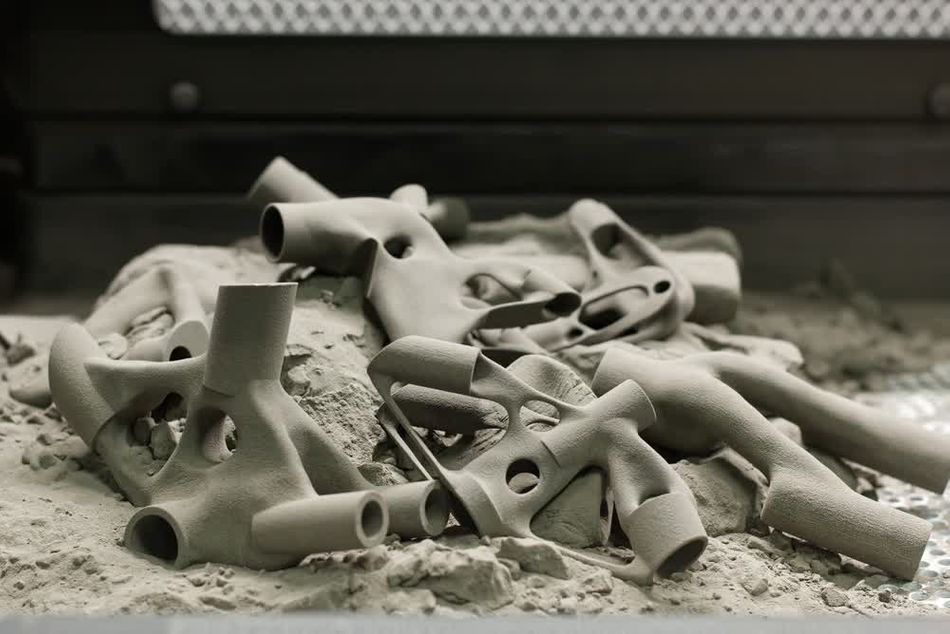
Not all thermoplastics come in filament form. Nylon powder is a key material in Selective Laser Sintering (SLS) 3D printing, valued for its strength, durability, and flexibility. SLS uses a high-powered laser to fuse powdered materials layer by layer, with nylon being one of the most commonly used due to its excellent mechanical properties. Nylon 12, for example, is popular for producing functional prototypes, end-use parts, and components requiring toughness and wear resistance. Industries such as automotive, aerospace, and consumer goods leverage SLS with nylon for everything from gears and housings to complex assemblies.
Other materials used in SLS include TPU (thermoplastic polyurethane), which offers rubber-like elasticity, making it ideal for gaskets, seals, and footwear. Glass-filled nylon is another variant, providing enhanced stiffness and dimensional stability for parts that must withstand high loads or temperatures. The versatility of SLS-compatible materials allows for a wide range of applications, from flexible components to high-performance, load-bearing parts.
Reinforced Polymer Composites
Carbon fiber-reinforced composites are among the most popular in 3D printing. These materials combine a polymer matrix, such as nylon or PEEK, with chopped carbon fibers. The result is a material that boasts exceptional strength-to-weight ratio, stiffness, and dimensional stability. Carbon fiber composites find applications in aerospace, automotive, and high-performance sports equipment.
Glass-filled composites utilize glass fibers or particles dispersed within a polymer matrix. These materials offer improved strength, thermal stability, and wear resistance compared to the base polymer. Glass-filled composites are often used in engineering applications requiring enhanced mechanical properties and temperature resistance.
Other popular composite materials include Kevlar-reinforced polymers, which provide excellent impact resistance and durability, and metal-filled polymers that combine the ease of printing plastics with some metallic properties like increased thermal conductivity or magnetic characteristics.
Composites enhance the mechanical properties of 3D printed parts through several mechanisms. The reinforcing fibers or particles bear a significant portion of the applied load, distributing stress throughout the material. This results in increased tensile strength, flexural strength, and impact resistance. Additionally, the reinforcements can improve the material's resistance to creep and fatigue, extending the lifespan of printed parts under stress.
Using specialist equipment such as printers made by disruptive 3D printing company Markforged, the orientation of fibers in composite materials can also be tailored to optimize strength in specific directions, allowing for the creation of anisotropic parts with enhanced performance in critical areas. This level of customization is particularly valuable in applications requiring precise control over material properties.
Photopolymerizable Resins
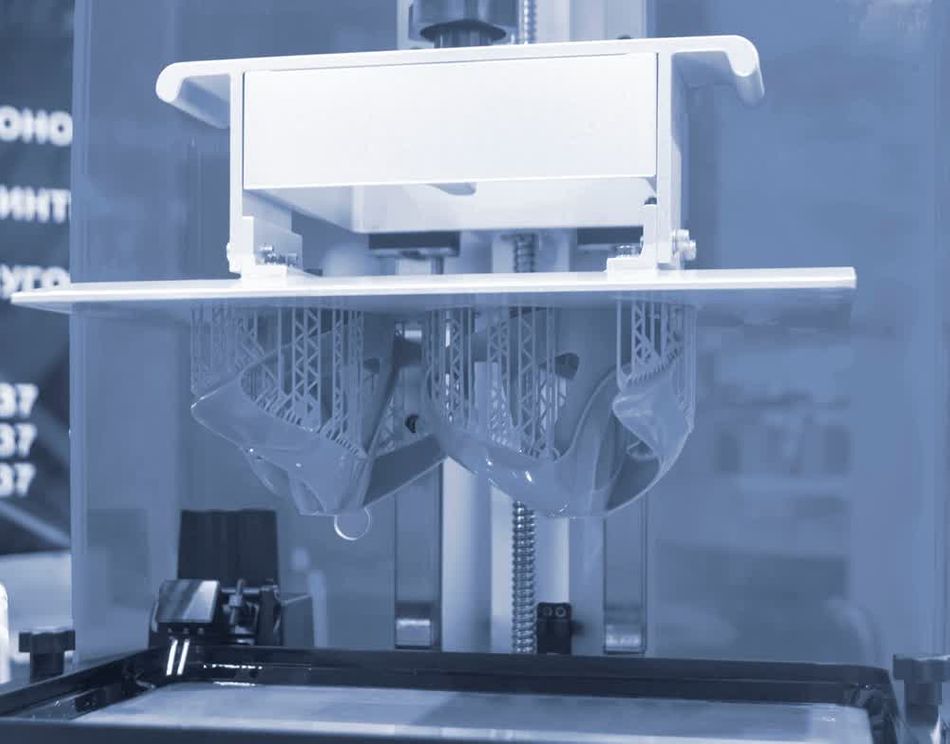
Photopolymerizable resins are specialized materials used in various types of 3D printing technologies, particularly in processes like stereolithography (SLA), digital light processing (DLP), and liquid crystal display (LCD) 3D printing. Resins are also used in advanced material jetting 3D printing technologies. These resins are liquids that solidify when exposed to a specific wavelength of light, typically ultraviolet (UV) light. The curing process, known as photopolymerization, involves the activation of photoinitiators within the resin, leading to the formation of strong, cross-linked polymer chains that create the final solid structure.[2]
Photopolymerizable resins are typically composed of a mixture of oligomers, monomers, photoinitiators, and various additives. The oligomers and monomers form the backbone of the polymer structure, determining the final mechanical properties of the printed part. Photoinitiators are crucial components that absorb light energy and initiate the polymerization process. Additives can include pigments for color, stabilizers to improve shelf life, and other modifiers to enhance specific properties like flexibility or toughness.
There are several types of photopolymer resins available, each designed for different applications:
Type of Resin | Description | Typical Uses |
Standard Resins | Most commonly used; offers a balance between cost and performance. Typically brittle, not suitable for high-strength functional parts. | Detailed prototypes, aesthetic models |
Tough Resins | Mimics ABS plastic with better impact resistance and flexibility. Suitable for functional parts requiring durability. | Functional prototyping, end-use parts |
Flexible Resins | Produces rubber-like parts with varying degrees of flexibility. | Gaskets, seals, wearable devices |
High-Temperature Resins | Withstands high temperatures, suitable for applications requiring thermal stability. | Casting, molding, thermal applications |
Dental and Medical Resins | Biocompatible, used in the dental and medical industries. | Dental models, surgical guides, custom implants |
Castable Resins | Used for investment casting; burns out cleanly without leaving ash, ideal for detailed metal parts. | Jewelry industry, detailed metal casting |
Photopolymerizable resins offer several advantages over traditional filament-based 3D printing materials like PLA or ABS. One of the most significant benefits is the ability to produce highly detailed parts with smooth surface finishes, thanks to the fine resolution achievable by SLA, DLP, and LCD printers. This makes resins particularly suitable for applications requiring high precision, such as dental models, jewelry, and complex engineering prototypes.
Another advantage is the versatility of resin formulations. Manufacturers can tailor the properties of resins to meet specific needs, ranging from tough to flexible to clear or translucent, broadening the range of potential applications. Additionally, the ability to print transparent, colored, or even biocompatible materials expands their utility across different industries.
Despite their benefits, photopolymerizable resins also present challenges. They are often more expensive than traditional thermoplastic filaments and require careful handling due to their liquid state. Post-processing is typically necessary, including washing off excess resin and curing the part under additional UV light to achieve full mechanical strength.
Furthermore, the brittleness of some resins can limit their use in load-bearing applications. Environmental factors, such as exposure to UV light and humidity, can also degrade some resin-based parts over time, affecting their longevity.
Metals
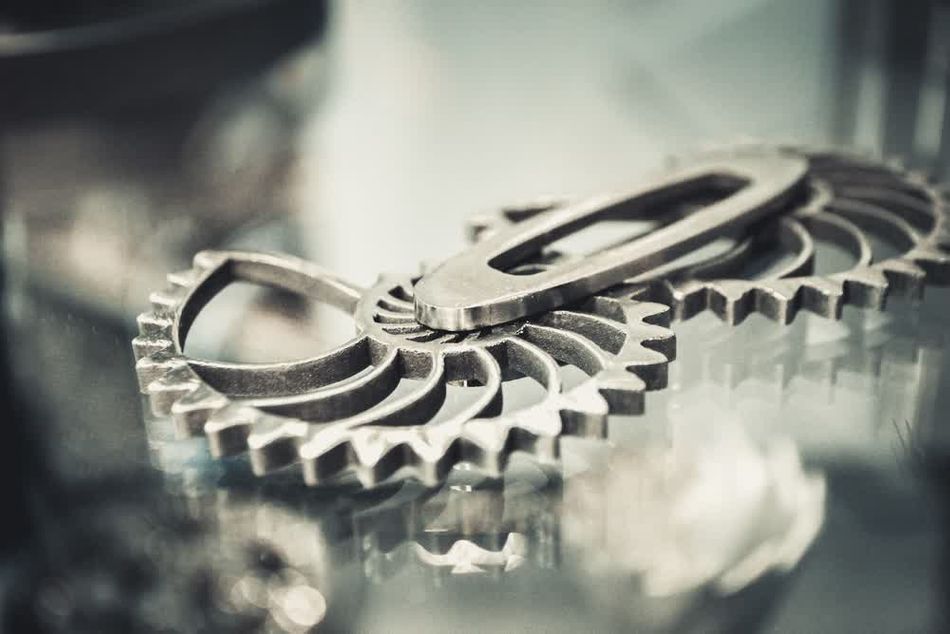
Metal 3D printing has contributed to a change in contemporary manufacturing by enabling the creation of complex, high-strength parts with unparalleled design freedom. This technology utilizes metal powders to build objects layer by layer, offering unique advantages over traditional manufacturing methods.
Metal/Alloy | Strength | Heat Resistance | Corrosion Resistance | Typical Uses |
Stainless Steel (316L) | High | Moderate | Very High | Medical devices, food processing, marine parts |
Titanium (Ti-6Al-4V) | Very High | Very High | High | Aerospace, medical implants, automotive parts |
Aluminum (AlSi10Mg) | Moderate | High | Moderate | Lightweight parts, automotive, aerospace |
Inconel (In625) | High | Very High | Very High | Chemical processing, marine applications, aerospace |
Cobalt-Chrome (CoCr) | Very High | High | Very High | Medical implants, dental prosthetics, aerospace |
Tool Steel (H13) | Very High | High | Moderate | Molds, dies, cutting tools, high-wear parts |
Nickel Alloy (Ni625) | High | Very High | Very High | Chemical processing, marine applications, aerospace |
Copper (CuCr1Zr) | Moderate | Moderate | Low | Electrical components, heat exchangers, cooling systems |
Common metal powders used in 3D printing include aluminum, titanium, and stainless steel. Aluminum alloys are prized for their lightweight properties and corrosion resistance, making them ideal for aerospace and automotive applications. Titanium powders offer an exceptional strength-to-weight ratio and biocompatibility, finding extensive use in medical implants and high-performance aerospace components.[3] Stainless steel powders provide excellent mechanical properties and corrosion resistance, suitable for a wide range of industrial applications.
Metal 3D printing materials possess unique properties that set them apart from their traditionally manufactured counterparts. The layer-by-layer building process can result in anisotropic properties, where mechanical characteristics vary depending on the build direction. This can be advantageous in certain applications but requires careful consideration during design. Additionally, the rapid solidification rates in metal 3D printing can lead to fine microstructure.
Several metal 3D printing technologies exist, each with specific material requirements. Powder Bed Fusion (PBF) techniques, such as Selective Laser Melting (SLM) and Electron Beam Melting (EBM), require fine, spherical metal powders with specific size distributions to ensure optimal flowability and density. Direct Energy Deposition (DED) methods can use both powders and wire feedstock, offering flexibility in material choice and build size. Binder Jetting technology uses metal powders combined with a binding agent, followed by sintering, allowing for faster build speeds but potentially lower density parts.
Industries benefiting from metal 3D printing materials include:
Aerospace: Lightweight, complex components for aircraft and spacecraft
Automotive: Custom parts, tooling, and prototypes for vehicle manufacturing
Healthcare: Patient-specific implants and surgical instruments
Energy: Specialized components for oil and gas, wind turbines, and nuclear reactors
Tooling: Conformal cooling channels in injection molds and dies
Maritime: Corrosion-resistant parts for marine applications
Metal 3D printing continues to advance, with ongoing research into new alloys specifically designed for additive manufacturing processes. These developments promise to further expand the capabilities and applications of metal 3D printing across various industries.
Recommended reading: 3D Printing Titanium: Best Processes, Alloys, Applications
Ceramics
Additive manufacturing of ceramics represents a significant advancement in producing high-performance, complex parts with superior material properties. Ceramic 3D printing allows the fabrication of components that are difficult or impossible to achieve using traditional methods.
Ceramic Material | Strength | Heat Resistance | Corrosion Resistance | Typical Uses |
Alumina (Al2O3) | High | Very High | Very High | Electrical insulators, cutting tools, wear parts |
Zirconia (ZrO2) | Very High | High | High | Dental crowns, implants, thermal barriers |
Silicon Carbide (SiC) | Very High | Extremely High | Very High | High-temperature components, nozzles, armor |
Silicon Nitride (Si3N4) | High | Very High | High | Bearings, turbine blades, medical devices |
Aluminum Nitride (AlN) | Moderate | High | High | Electronics, thermal management, substrates |
Ceramic 3D printing materials like alumina and zirconia are valued for their exceptional hardness, high-temperature stability, and chemical resistance. Alumina is widely used for its electrical insulating properties and wear resistance, making it ideal for components like electrical insulators and cutting tools.[4] Zirconia is favored in the medical and dental industries due to its toughness and biocompatibility, suitable for implants and crowns.
The layer-by-layer construction in ceramic 3D printing can produce parts with anisotropic properties, where mechanical characteristics vary by build direction. This property can be tailored for specific applications, but it also requires careful consideration during design. Additionally, ceramics are known for their brittleness, which can be a limitation, though the precision and complexity achievable often outweigh these challenges.
Ceramic additive manufacturing technologies include Vat Photopolymerization and Binder Jetting, each suited for different ceramic materials and applications. Vat Photopolymerization uses a slurry of ceramic particles suspended in a photosensitive resin, which is selectively cured by light. Binder Jetting involves binding ceramic powder with a liquid binder and then sintering the part to achieve full density.
Application-Specific 3D Printing Materials
Biocompatible Materials
Biocompatible materials in 3D printing are transforming the medical field, enabling the creation of customized medical devices, implants, and tissue engineering scaffolds. These materials are specifically designed to interact safely with biological systems, minimizing adverse reactions and promoting healing.
Polyetheretherketone (PEEK) is a high-performance thermoplastic widely used in medical 3D printing. Its excellent mechanical properties, chemical resistance, and ability to withstand sterilization make it ideal for long-term implants such as spinal cages and cranial implants. PEEK can be reinforced with carbon fibers to enhance its strength and match the mechanical properties of bone.
Bioabsorbable polymers such as polylactic acid (PLA) are gaining traction in 3D printing of temporary implants and drug delivery systems. These materials gradually degrade in the body, eliminating the need for removal surgery and potentially promoting tissue regeneration.
Conductive and Dielectric Materials
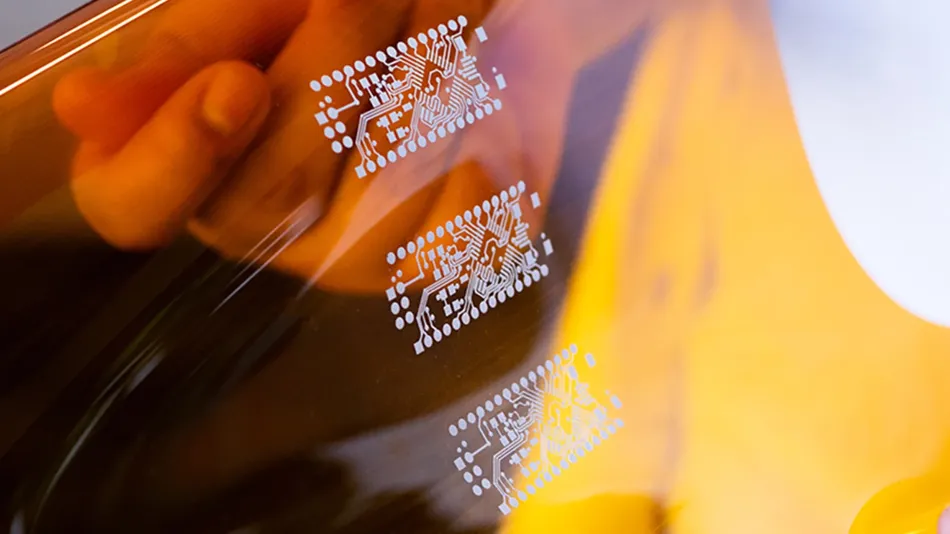
Conductive and dielectric 3D printing inks are transforming the electronics manufacturing landscape by enabling the creation of complex, multi-functional devices directly from digital designs. These specialized inks allow for the additive manufacturing of electronic components, such as printed circuit boards (PCBs), sensors, antennas, and even fully integrated electronic devices. By leveraging conductive inks, typically made from materials like silver, copper, or carbon nanotubes, manufacturers can print electrical pathways, connectors, and other conductive features directly onto various substrates. Dielectric inks, on the other hand, are used to insulate these conductive layers, ensuring proper function and preventing short circuits.
The combination of conductive and dielectric inks opens up new possibilities in printed electronics. For instance, flexible electronics, which can bend, stretch, or conform to complex shapes, are now feasible for applications in wearable devices, medical implants, and smart textiles. Additionally, the integration of these inks in multi-material 3D printing processes allows for the production of components with embedded electronics, reducing the need for traditional assembly and enabling more compact and lightweight designs.
Sand Molds
3D printing sand for mold cores is gradually changing traditional casting processes by enabling the rapid production of complex and highly detailed molds. This method uses binder jetting technology to selectively bind layers of sand into precise geometries, eliminating the need for conventional tooling and reducing lead times. The resulting sand cores are used in metal casting, allowing for the creation of intricate internal structures and overhangs that would be difficult or impossible to achieve with traditional methods. This approach enhances design flexibility, shortens production cycles, and reduces costs, making it ideal for industries like automotive and aerospace.
Construction Materials
3D printed concrete has garnered attention for its potential to streamline construction by enabling faster build times and reducing material waste. The technology uses large 3D printers to layer concrete mixtures, promising efficient and cost-effective building processes. However, the practical benefits of 3D printed concrete are still up for debate. While it excels at creating unique designs and complex geometries, the technology currently faces significant limitations, including the need for specialized equipment, strict material requirements, and challenges in achieving consistent quality across large-scale projects.
Edible Materials
Though they might be considered something of a gimmick, edible 3D printing materials can enable the creation of intricate, customized food designs. Common materials include chocolate, sugar, dough, and pureed foods, which are extruded or deposited layer by layer to form complex shapes. These materials allow chefs and food designers to craft unique dishes, personalized treats, and even nutritionally tailored meals. The technology is also being explored for creating food in space and addressing food scarcity.
Material Developments
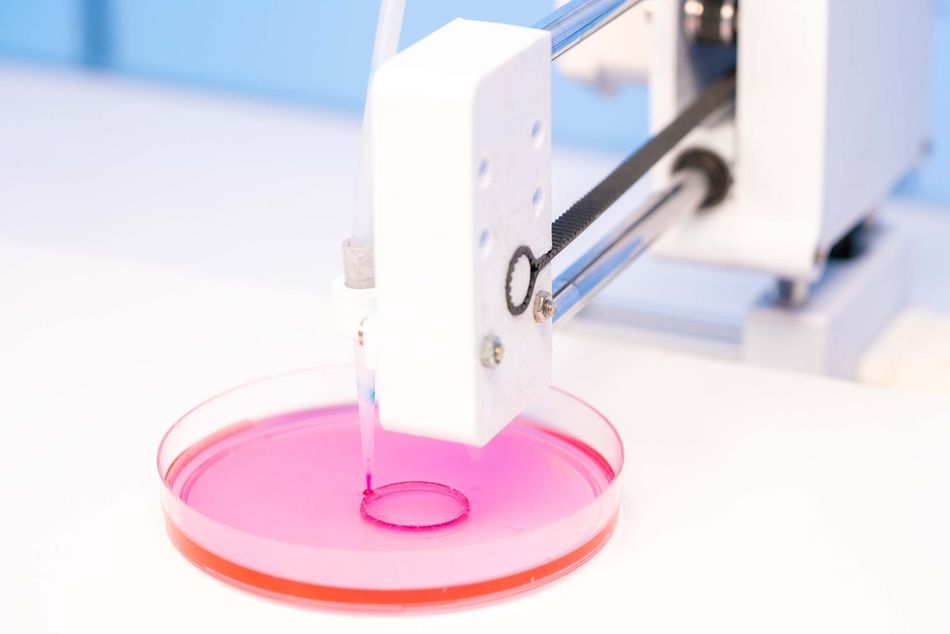
Current trends in 3D printing materials reflect a growing focus on sustainability and the expansion of material capabilities to meet diverse industrial needs. Sustainable materials are gaining traction as environmental concerns drive innovation. Biodegradable filaments, recycled plastics, and bio-based resins are being developed to reduce waste and environmental impact. Companies are also exploring carbon-negative materials, aiming to create 3D printing processes that contribute to net-zero carbon goals.
In the medical field, bioinks are at the forefront of innovation, though they remain a niche concern. These materials, which often include living cells and biomolecules, can enable the 3D printing of tissues, organs, and scaffolds for regenerative medicine. Bioinks are evolving to better mimic the complex microenvironments found in natural tissues, paving the way for more effective and personalized medical treatments.
Copper and refractory metals, such as tungsten and molybdenum, are expanding the material palette for industrial 3D printing, particularly in high-performance applications. Copper’s excellent thermal and electrical conductivity makes it ideal for heat exchangers, electrical components, and antennas. However, printing with copper is challenging due to its high reflectivity and thermal conductivity. Refractory metals, known for their ability to withstand extreme temperatures and corrosion, are being utilized in aerospace and nuclear industries. Innovations in powder metallurgy and additive manufacturing are making it possible to print these difficult materials with improved precision and consistency.
Conclusion
The field of 3D printing materials is vast and rapidly evolving, encompassing a wide range of plastics, metals, composites, and other materials. Understanding the properties and applications of these materials is crucial for successful 3D printing outcomes. From basic thermoplastics to advanced biocompatible and conductive materials, each type offers unique advantages and challenges. The selection of appropriate materials, optimization of print parameters, and application of post-processing techniques all play vital roles in achieving desired part performance.
Frequently Asked Questions
What are the most common materials used in 3D printing?
The most common materials in 3D printing are thermoplastics such as PLA, ABS, and PETG, because FFF is the most common 3D printing process. These materials are widely used due to their ease of printing, affordability, and suitable mechanical properties for many applications.
What are the advantages of using metal 3D printing materials?
Metal 3D printing materials offer several advantages:
Ability to create complex geometries not possible with traditional manufacturing
Potential for weight reduction through optimized designs
Suitability for functional end-use parts in industries like aerospace and medical
Can 3D printed materials be as strong as traditionally manufactured parts?
3D printed plastics and metals are typically weaker than their machined, molded, cast, or forged counterparts due to internal weaknesses where layers fuse together. However, they often make up for this disadvantage in other areas such as part complexity.
What recent advancements have been made in 3D printing materials?
Recent advancements in 3D printing materials include:
Development of high-performance polymers like PEEK for demanding applications
Improved metal powders for more efficient and accurate metal 3D printing
Biocompatible and bioabsorbable materials for medical applications
Conductive polymers and composites for 3D printed electronics
Sustainable and recycled materials to reduce environmental impact
References
[1] Major Z, Lackner M, Hössinger-Kalteis A, Lück T. Characterization of the fatigue behavior of SLS thermoplastics. Procedia Structural Integrity. 2021 Jan 1;34:191-8.
[2] Bagheri A, Jin J. Photopolymerization in 3D printing. ACS Applied Polymer Materials. 2019 Feb 20;1(4):593-611.
[3] Marin E, Lanzutti A. Biomedical applications of titanium alloys: a comprehensive review. Materials. 2023 Dec 25;17(1):114.
[4] Truxová V, Šafka J, Sobotka J, Macháček J, Ackermann M. Alumina manufactured by fused filament fabrication: a comprehensive study of mechanical properties and porosity. Polymers. 2022 Feb 28;14(5):991.
Table of Contents
Thermoplastic PolymersHigh-Performance PolymersPolymer PowdersReinforced Polymer CompositesPhotopolymerizable ResinsMetalsCeramicsApplication-Specific 3D Printing MaterialsBiocompatible MaterialsConductive and Dielectric MaterialsSand MoldsConstruction MaterialsEdible MaterialsMaterial DevelopmentsConclusionFrequently Asked QuestionsReferences